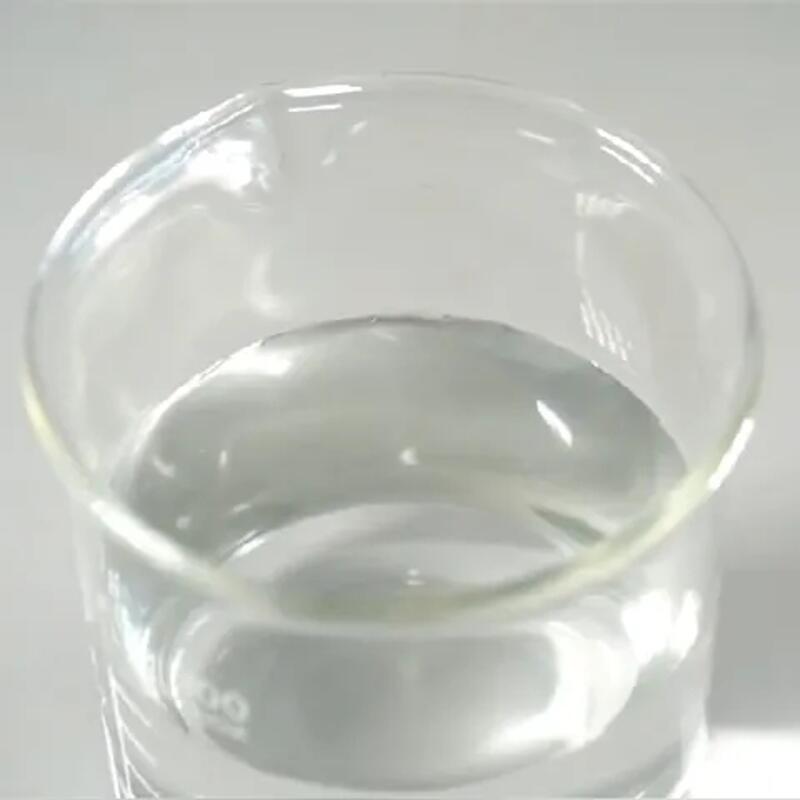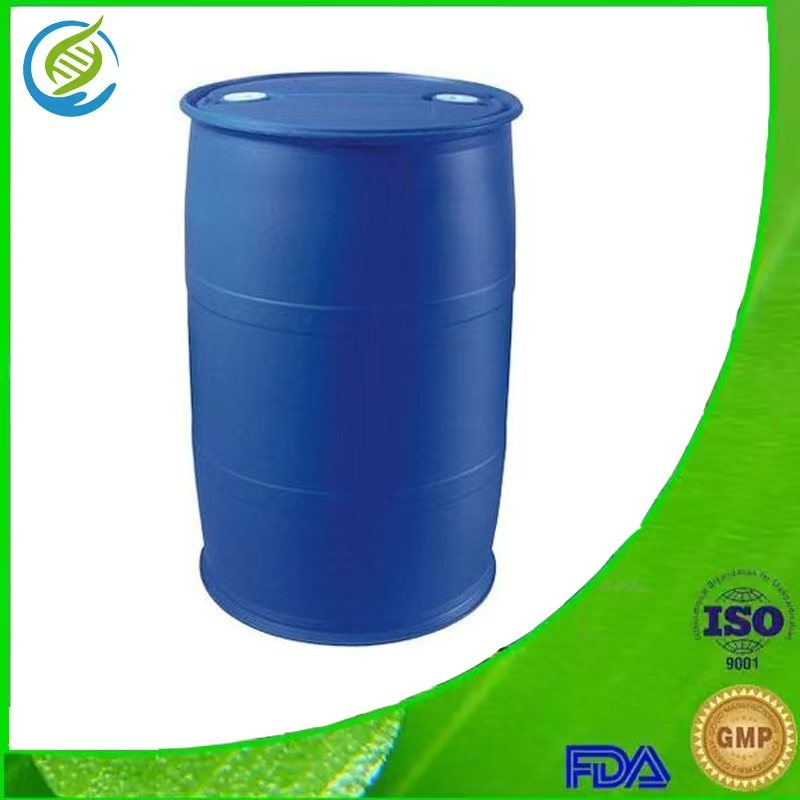-
Categories
-
Pharmaceutical Intermediates
-
Active Pharmaceutical Ingredients
-
Food Additives
- Industrial Coatings
- Agrochemicals
- Dyes and Pigments
- Surfactant
- Flavors and Fragrances
- Chemical Reagents
- Catalyst and Auxiliary
- Natural Products
- Inorganic Chemistry
-
Organic Chemistry
-
Biochemical Engineering
- Analytical Chemistry
-
Cosmetic Ingredient
- Water Treatment Chemical
-
Pharmaceutical Intermediates
Promotion
ECHEMI Mall
Wholesale
Weekly Price
Exhibition
News
-
Trade Service
The harmful characteristicof of diagnosis and treatment is a defect of medicine itself, and it is a very easy part for many doctors to ignoreThe development of modern anesthesiology, there are more technologies and means for clinical selection, for the development of surgical technology to expand the space; Therefore, how to choose the method of anesthesia and what technical means to use become an important part of clinical anesthesia decision-making1Patient informationpatient, female, 82 years old, height 155 cm, body mass 49kg, right upper abdominal pain 5d, aggravated 1d, to "gallbladder stones with acute gallbladderitis" admitted to hospital, proposed laparoscopy gallbladder removal surgeryPatients living on their own preoperative life, no obvious acute, chronic bronchitis history, preoperative heart function grade II or III, deoxygenation state pulse oxygen saturation (SpO2) 94%White blood cells (WBC) 23.5 x 109/L, neutrophils (PMN) 88.8%, heeurea nitrogen 6.27mmol/L and total bilirubin 73.8 mmol/L are high, other blood biochemical, electrolyte examinations are normal; electrocardiograms: sinus tachycardia, frequent room premature pace, complete right beam conduction block; patients merge thyroid gland combined with thyroid More than 20 years of medical history, body surface appears the tumor body extremely more than the upper edge of a-shaped cartilage, the lower pole deep into the upper sternum, body surface touch to the right of the trachea, no voice hoarse, reclining without shortness of breath, chest tightness and other discomfort;preoperative anesthesia discussion: (1) elderly patients, emergency laparoscopic gallbladder removal surgery, preferred trachea intubation general anesthesia to facilitate breathing, circulation management during surgery; In surgery muscle loose requirements are relatively high, surgery still has the possibility of trachea narrow ingested further locking, therefore, it is important to the trachea catheter far end through the pressure dislocated part, compared with the CT tablet sending the trachea catheter (tracheal catheter stitching) ;(4) after surgery must be completely awake, muscle loose after a full recovery to pull out the trachea catheter, and in the trachea reserved guide tube for easy re-intubationUnder the reclining position or in the body position change, the patient does not have obvious chest tightness and other symptoms, the use of small doses of sedatives, can still ensure the smooth respiratory tract, comprehensive assessment, there is no risk of mask ventilation difficultiesBased on more than 20 years of work experience, we propose alternatives: the use of continuous epidural anesthesia, the retention of autonomous breathing conditions to complete the elderly laparoscopic gallbladder removal surgery, can completely avoid the trachea intubation general anesthesia faced by the difficulties and perinatal airway management risksHowever, in practice, it is necessary to meet the requirements of surgery for muscle loose condition and anaesthetic blocking range, but also to maintain the stability of breathing and circulation during surgery, which is extremely difficult, especially to strengthen the perioperative respiratory management and monitoring2Anaesthetic implementation and effectright elbow intravenous fluids, left tibia puncture tube continuous arterial blood pressure monitoring, nasal catheter oxygen absorption, oxygen flow 3L/minLeft lycing line T8-9 vertebral gap puncture, head end epidural external tube 3.5 cm, test dose 1.0% hydrochloric acid Lidoca 3mL, 5min after confirmation of epidural anaesthetic blocking effect, add 0.3% hydrochloric acid bubikain 8.3mL (0.5% hydrochloric acid bbiika 5mL dilution to 8.3mL), Anesthetic blockplane range T3-T12, 45min, 80min after the addition of 0.25% hydrochloric acid bbicain 2.5mL;basic blood pressure (BP) 120/70mmHg, heart rate (HR) 118 times/min, BP decreased significantly after anesthesia, micropump injection of hydrochloric acid deoxyrepinephrine, so that BP maintained at 95/50mmHg above, spO299% during surgery, HR slowly decreased and remained at 85 to 90 times/min The operation lasted 130min, the operation will be carbon dioxide gas abdominal pressure conditions controlled at 10mmHg below, during the operation input crystal fluid 750mL, colloidal fluid 500mL; 25min and 85min arterial blood gas analysis after the start of surgery, PH7.342, 7.340, arterial blood oxygen pressure (PaO2) 104, 109mmHg, arterial blood carbon dioxide pressure (PaCO2) 3 8, 38.9mmHg, prompt surgery ventilation, ventilation, no significant CO2 accumulation, blood lactic acid (Lac) from 2.2mmol/L to 1.9mmol/L, indicating that the patient tissue perfusion during perioperative surgery improved After the operation sober return to the ward, the first day after surgery appeared shoulder neck acid bloating, after surgery 2d shoulder neck acid swelling improved; 3 Discussion the development of anesthesiology, can not be completely separated from history
the rapid development of modern anesthesiology in the past 20 years, including intravenous anaesthetic sedatives, opioid receptor agonists, steroids / nonsteroidal analgesics, inhalation anesthetics, muscle relaxants and other narcotic drugs upgraded, diversity of dosage forms (from a single Long-acting drugs to medium-long-acting, short-acting development), target-controlled intravenous anesthesia pump (TCI pump) application, anesthesia machine, anesthesia-related monitoring and monitoring equipment performance improvement, so that the safety of trachea intubation general anesthesia, controllability, comfort beyond the vertebral anesthesia technology, become the first choice for most operations, social awareness and acceptance is also constantly improved, is the young anesthesiologist most exposed to anesthesia relatively speaking, intra-vertebral anaesthetic operation has more complications and uncertainties, such as whole spinal cord anesthesia, nerve root or horsetail nerve damage, respiratory and circulation inhibition, hemp poisoning, epidural hematoma, infection and inadequate anaesthetic blocking plane Therefore, young anesthesiologists are subjectively more willing to accept the clinical practice and education of trachea intubation general anesthesia, and are enthusiastic about the management of emergency airways and various airway management techniques The long process of learning and training the technique of intra-vertebral anesthesiology requires the accumulation of experience through continuous practice, and the use of visualization technology to ensure the accuracy of operation, improve the success rate of operation and reduce complications is the focus of modern anaesthetic technology training In this case, we used intravertebral anaesthetic technology to successfully complete the complex condition of the elderly emergency laparoscopic gallbladder removal surgery, with the accumulation of experience is inseparable In the 1990s, gallbladder excision surgery selected the upper abdomen side of the midcutia and gradually improved to the right rib small incision gallbladder removal surgery, cavity mirror-assisted small incision surgery and eventually the widespread use of laparoscopic gallbladder removal surgery, continuous epidural anesthesia has been widely used in upper abdominal surgery anesthesia The application of continuous epidural anesthesia in laparoscopic gallbladder removal surgery still exists in primary hospitals for a long time, through the dispensing of the bureau of the drug, the change of the injection method of the bureau drug, improve the effect of anesthesia blocking to meet the surgical requirements; In the course of the development of modern medicine, there are new clinical technologies, and some "past" clinical techniques have been "forgotten", and any kind of clinical technology has its unique advantages, focusing on clinical decision-making, selecting the right technology for suitable patients 3.2 Anaesthetic decision-making and its technical basis
clinical anesthesia decision stratification: (1) Selection of anesthesia methods: intravertebral anesthesia or general anesthesia (2) The choice of specific operating techniques: the selection and design of anaesthetic induction methods such as fast-induced anesthesia or slow-induced anesthesia, and the trachea intubation can use a variety of tools and techniques such as direct laryngoscope, diastomy endoscope, video laryngoscope, fiber bronchoscopy guide (3) The choice of anaesthetic management methods and the main points of perioperative management: the stability of cardiovascular circulation during perioperative; the perination management mode of perination period (small tide gas lung ventilation or exhalation of terminal positive pressure ventilation, etc.); perination temperature control or protective hypothermia (neurosurgery) etc (4) Changes in the anaesthetic scheme in surgery: caused by the failure of technical operation or changes in the surgical scheme consider the difficulties that the used anaesthetic may have for subsequent operations by changing the patient's mental state and circulatory breathing conditions Every step of anaesthetic decision-making is based on a mastery of anesthesia techniques/skills, immature anesthesia techniques/skills can change the implementation of anesthesia at any time, increasing the risk of anesthesia at key steps, anesthesiologists are used to choosing their own proficient anesthesiology techniques and methods, and clinical anesthesia decisions are limited by the level of practical skills of anesthesiologists Therefore, the practical technique/skill of anesthesia is the guarantee and foundation of scientific clinical anesthesia decision-making we must strive for excellence and bring anaesthetic techniques/skills to a certain level Such as epidural anesthesia, to pressure water method to perceive the breakthrough of the yellow ligament, and finally confirm the epidural catheter in the epidural cavity, which is the basic epidural anaesthetic puncture technical requirements The higher requirement is to be able to sense the epitaph of the episophon, interrataligament, piercing and staying in the yellow ligament, and then "water pressure" to break through the yellow ligament, to determine the endofor puncture effective Once the anaesthetic is abnormal, don't be entangled in the question "Is the puncture failing?" And "the needle is too shallow or too deep", focus on the exclusion of whether the wrong side of the blood vessels or the problem of drug dispensing such as double-cavity bronchial tube intubation technology, through "over-spin" and "swing", "insertion" and "backdial" techniques, through the smooth degree of intubation process perceived catheter and trachea matching, through hand-controlled respiratory airbags to perceive lung compliance, combined with ventilation air channel pressure and exhaled carbon dioxide waveform, to achieve the same level effect as fiber bronchoscopy guide intubation, improve the accuracy of the "one-intubation, control of the throat This single-technology, like the training of "snipers", is designed to increase the success rate of technical operations but mastering just one technology doesn't solve all the problems A qualified anesthesiologist must have operational skills in multiple technical paths at the same time to be able to develop a personalized anaesthetic management program for specific patients Such as general anaesthetic airway management, it is necessary to master mask ventilation skills (with the use of pharynx, nasopharyngeal ventilation), sound gate on the airway (throat duct ventilation channel), a variety of technical path of trachea intubation technology (Dior endoscope, video laryngoscopy, fiber bronchoscopy), in order to cope with foreseeable or unforeseen difficult ies of airways 3.3 dialectically look at the role of anesthesia technology in anesthesia decision-making, avoid the occurrence of "medical secondary injury
in clinical practice, we must believe in our own technical level, but not infatuated with their own technology Clinical anaesthetic operationist is mostly invasive operation, improper operation may endanger the patient's important organ function and life The hurtful characteristic of the means of diagnosis and treatment is a defect of medicine itself, and we should always maintain the human consciousness, reduce unnecessary secondary injury while treating the disease, and maximize the effect of medical humanities in compliance with the operating norms under the premise of the anaesthetic operation failure, should adjust the anesthesia program in a timely manner, not "the same person, the same path repeatedly tried." At any time, let us not forget that "abandonment" is also an option: central venous puncture miswound artery, hematoma formation to give up; intravertebral anaesthetic puncture failure can replace the puncture gap to do another attempt, or directly give up, change the trachea intubation general anesthesia; trachea failure can give up, waiting for throat edema to subside, perfect examination, careful assessment of the delay of downstream surgery technical skills are important, but any kind of technology must have its limitations, so clinical decision-making is the most important People are the core factors that determine medical safety, lack of safety awareness and risk-averse skills of medical personnel, any medical link will be a high-risk disaster journey In this case, the replacement of tracheal intubation general anaesthetic with continuous epidural anesthesia effectively avoids the risks and uncertainties in the difficult airway treatment process This choice and decision-making, at the same time reflects the combination of medical science and medical humanities If you choose the sober trachea intubation, through teamwork, reasonable anaesthetic design, careful preparation, fine perioperative period management, can also safely complete the operation, and to promote a department's level of anesthesia technology treating patients in order to improve technology is a dehumanizing act; we cannot mistakenly complicate simple treatments by using the advantages and expertise of a particular technology/skill, intentionally or unintentionally entering the trap of over-medicalization In clinical decision-making, we should give priority to the development of appropriate technology, adhere to the old technology that has been proved effective and low price in long-term practice, and maintain medical sustainability and fairness Anaesthetic technology and skills are the foundation and guarantee of clinical anesthesiology decision-making, we should strengthen the training of specialized skills, we rely on technology, but we can't obsess them, technology is just a means, not a result, we should strengthen the study of clinical decision-making theory, improve the level of anesthesia decision-making, reduce medical "secondary injury"







